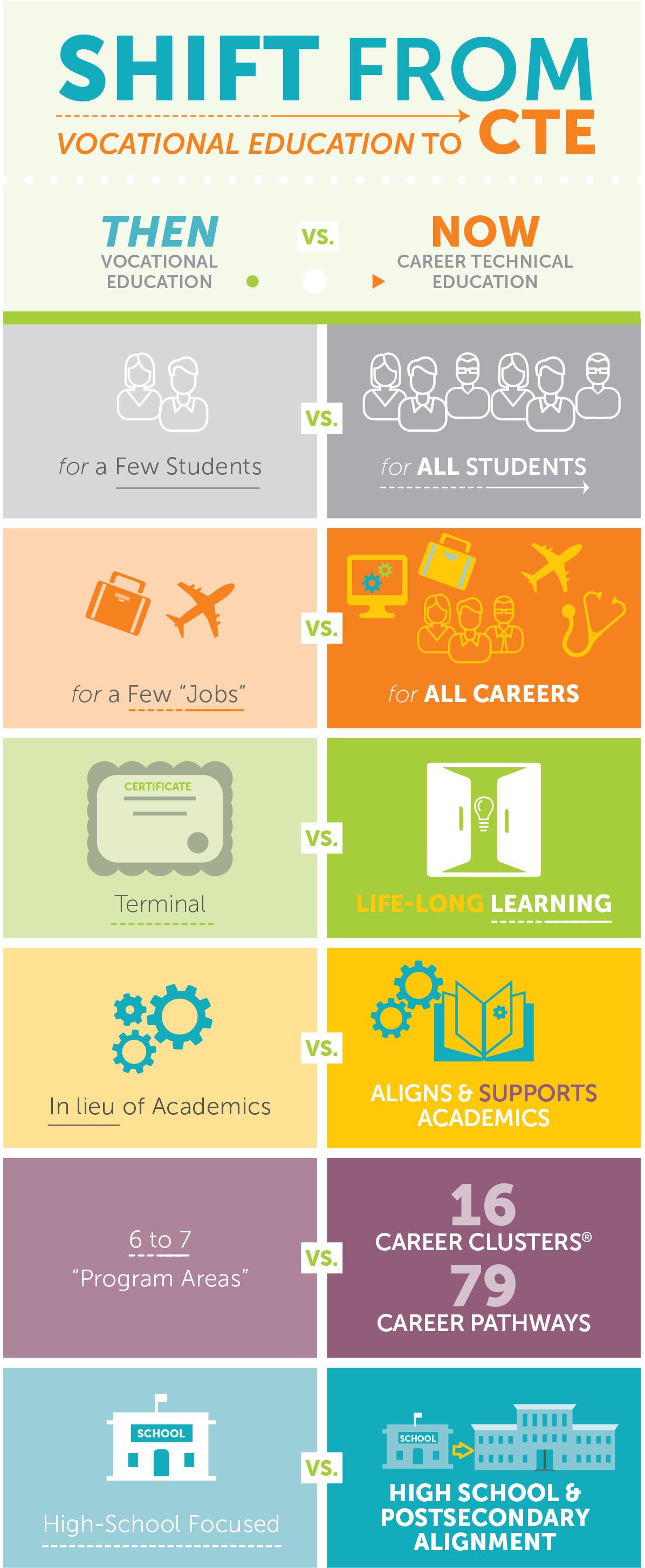
Feature
December | No. 2-2019
Career and Technical Education (CTE) programs focus on learning and building skills directly related to work and labor market demands, often for a certain sector or occupation.
Previously called vocational education, the new era CTE takes place at the secondary (high school), postsecondary (college), and adult education levels (illustrated in Figure 1). Programs are provided in educational and in real-world settings, often including apprenticeships and on-the-job training.
CTE coursework in high school is associated with increased earnings for those who participate (with variation in size of increase among programs), relative to demographically similar peers.
Studies have found that completing career-focused postsecondary certificates and associate degrees has been associated with large and persistent earnings increases, but the magnitude of benefits varies a lot by field of study and provider institution.

Source: Advance CTE: State Leaders Connecting Learning to Work. Used with permission.
Policy/practice
The following policy-/practice-related points were made by a group of researchers, practitioners, and policymakers who participated in a recent IRP workshop that examined CTE:[1]
- Ensuring equitable access to CTE programs is an important goal as programs evolve to embrace high-demand occupations that require postsecondary preparation and risk leaving more disadvantaged students behind.
- Without intentional efforts to avoid this pitfall, high expectations for CTE program outcomes could incentivize programs to avoid enrolling students from disadvantaged backgrounds who may be perceived as less likely to succeed.
- Responding to changes in the labor market is a particular challenge in rural areas that have a strong history of CTE programs rooted in industries that are now on the decline.
- CTE programs must invest in data collection, evidence building, and dissemination of findings if they are to understand the extent to which they are meeting their equity and effectiveness goals.
- Policymakers (and students) need information to help them distinguish between programs with high, low, or no returns.[2]
[1] 2019 Career and Technical Education: Promise and Practice Workshop Agenda.
[2] See “What Do We Know about Career and Technical Education?” Fast Focus No. 38-2019, April 2019; and “Ensuring Equity in Evolving High School Career and Technical Education Policies,” Fast Focus No. 42-2019, August 2019.